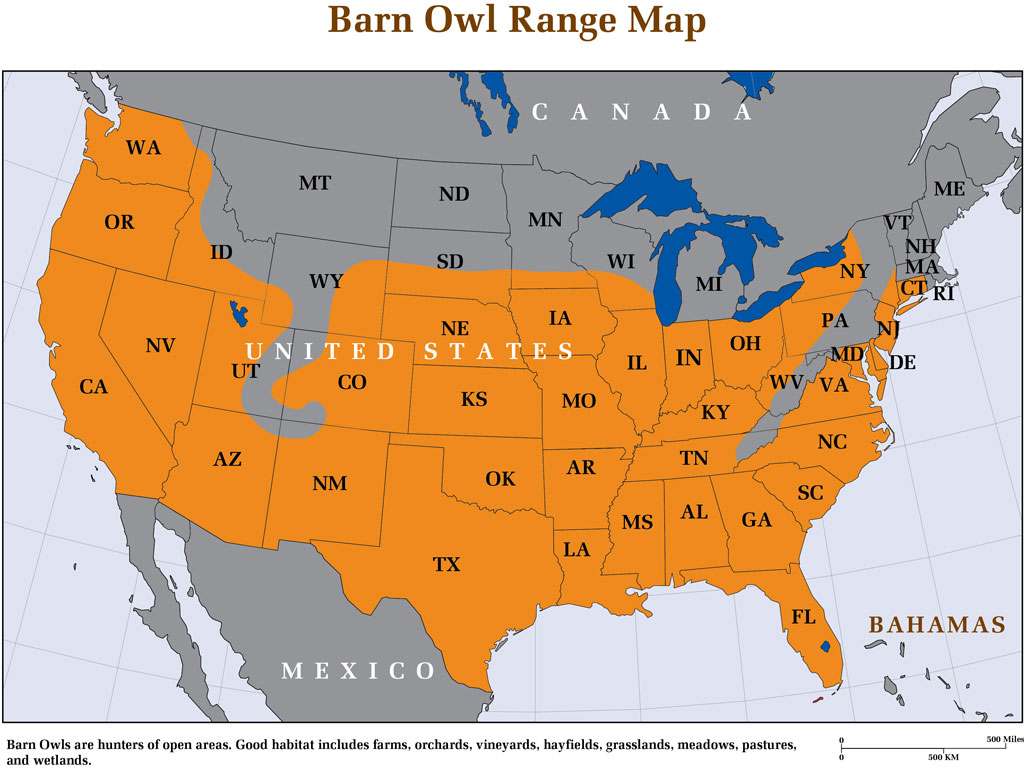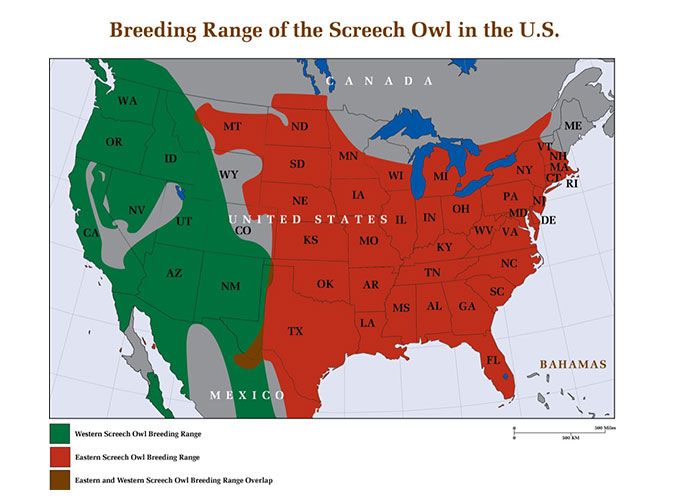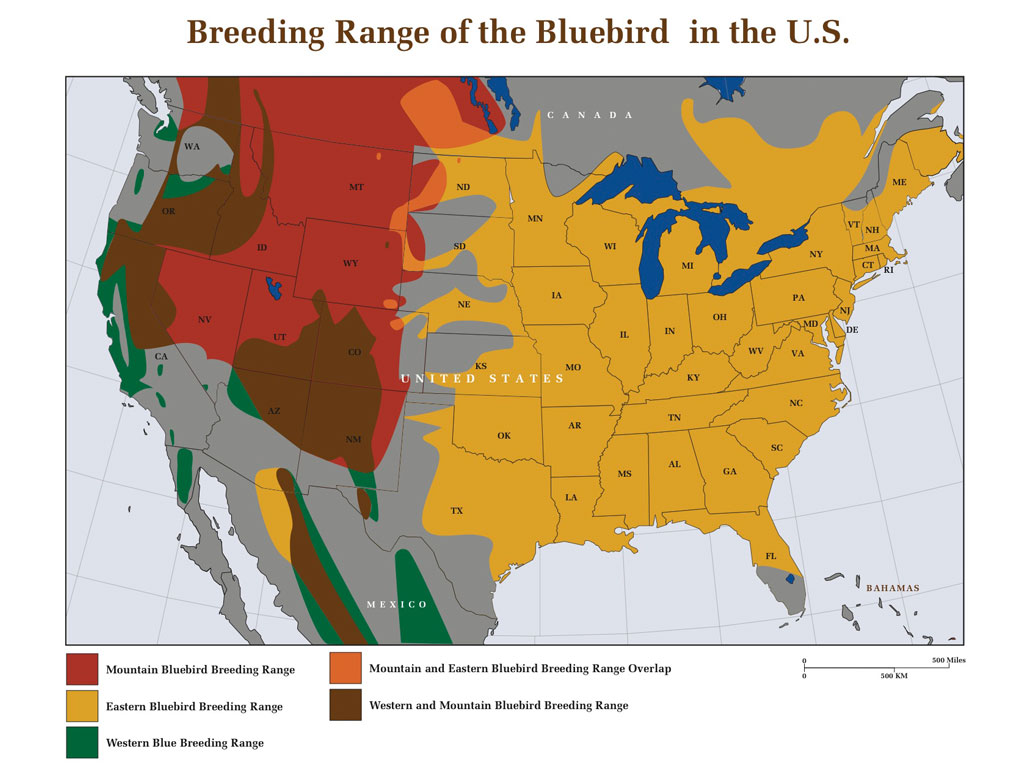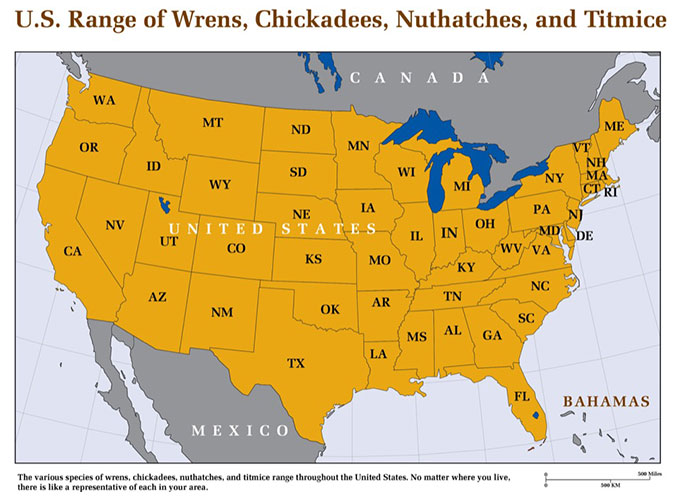Free Shipping to the Contiguous United States
Using Barn Owls for Rodent Control in Florida Orange Groves
The Florida Citrus Industry
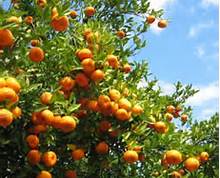
With approximately half a million acres of orange groves consisting of over 74 million trees, oranges are the largest cash crop in the state of Florida, creating a 64 billion dollar industry. Florida produces most of the juice oranges in the country, leads the nation in grapefruit production, and is second only to California in overall harvest.
Although Polk County in central Florida continues to produce large orange harvests, most of the citrus farms have been relocated to southern Florida where danger of damaging frosts is far less likely.
Rodent Pests in Orange Groves
As with all crops, oranges are plagued by their own attendant rodent pests. The most damaging species of rodent in orange groves is the roof rat, also known as the black rat and, appropriately, the citrus rat. The roof rat originated in tropical Asia, and immigrated to the United States via ocean going vessels. The warm, moist climates of the southern United States allowed this pest to proliferate and it now is the most prevalent rat in many areas, including Florida.
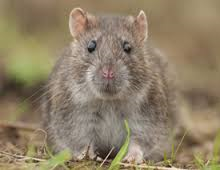 The roof rat is so called because, unlike its cousin, the Norwegian rat, the roof rat lives mainly above ground, nesting in trees and attics, running from place to place along tree branches, and electric and phone lines. Like most rats, it has a high reproductive rate: females produce five to eight young as many as four times per year and, more devastating for farmers, young females can reproduce at ninety days old.
The roof rat is so called because, unlike its cousin, the Norwegian rat, the roof rat lives mainly above ground, nesting in trees and attics, running from place to place along tree branches, and electric and phone lines. Like most rats, it has a high reproductive rate: females produce five to eight young as many as four times per year and, more devastating for farmers, young females can reproduce at ninety days old.
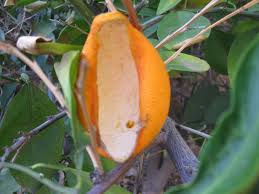
Although they are omnivorous, roof rats prefer fruits and nuts as the mainstay of their diet, and the huge swaths of Florida orange groves harbor high numbers of this pest. Damage to the crops can be high. Roof rat damage to citrus is typified by a quarter to half-dollar sized hole where the rat chewed through the skin and then hollowed out the meat of the fruit. Other damage is done to buildings where roof rats chew through electric lines, water pipes, and create holes in walls, floors, and ceilings.
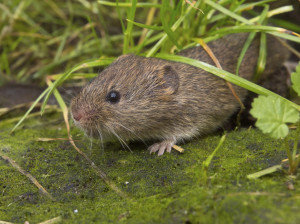
Orange groves are also plagued by various species of mice which, like roof rats, climb trees, chew on blossoms, new growth, and fruit. And voles, also known as meadow mice, feed on the roots and bark of the trees, weakening trees, and sometimes even killing individual trees by girdling them.
The Barn Owl and Orange Groves
As in California vineyards, damage to orange and citrus groves can be significantly reduced by utilizing barn owls in large numbers to reduce rodent populations. Although this practice has not yet caught on in Florida as it has in California, the results in the western vineyards show that it is a trend that is ready to explode in Florida as farmers in various states and countries report very positive results by using barn owls in integrated pest management programs.
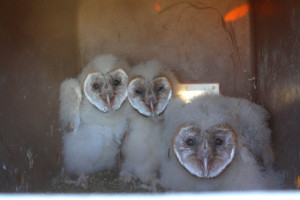
Barn owls are unique as predators in that they are colonial–willing to live within close proximity to each other. This, combined with their high tolerance of human activity, their prodigious appetites, and high production of young, makes them extremely applicable to natural rodent control programs. A single barn owl family will consume thousands of rodents per year.
The Costs of Trapping Rodents Versus Using Barn Owls
Roof rats are most commonly controlled through trapping. As in trapping pocket gophers in California, it is a labor-intensive, costly method for taking out relatively small numbers of rodent pests. A study in California has shown that when costs are compared between trapping pocket gophers and using barn owls to harvest them, the barn owls are hands down far cheaper: after investing in 25 barn owl nest boxes, one vineyard revealed that over a two year period, the cost of using barn owls to take rodents equaled approximately 25 cents each; this contrasted sharply with their estimate of $8 for each pocket gopher taken by human trapping. Similar costs would apply to trapping roof rats versus allowing barn owls to control them.
Barn Owls in Florida
Florida is an excellent place to use barn owls for rodent control since barn owls are very common throughout the state. Richard Raid, a biologist working for U.S. Sugar, once showed the author a barn that housed ten pairs of owls–all raising young in that single barn. The main limiting factor for barn owls in Florida is the availability of nesting sites. Nest boxes are usually occupied quickly with almost 100% occupancy, making it easy to establish a large and effective population of these rodent-eating owls.
Establishing a Barn Owl Nest Box Program
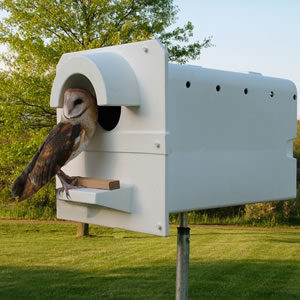
The beauty of a barn owl nest box program is that it is inexpensive to initiate, and then takes very little maintenance per year to maintain. (Each nest box should be cleaned once per year, a ten minute operation.) And the owl population is self-perpetuating– the owls keep coming back and, importantly, exert a continuous, unrelenting pressure on the rodent population.
Barn owl nest boxes can be erected anywhere the orchard has space to put them: the owls will emerge in the evening and hunt areas where rodents proliferate. Perimeter roads, unused corners of land, and the ends of rows are ideal for erecting boxes and, because barn owls are so colonial, nest boxes can be placed as little as fifty feet apart.
How Many Nest Boxes to Install
Typically, barn owls work best when there are a number of pairs to ensure that the rodent population is kept in check. The basic rule of thumb is one nest box for every ten to twenty acres. Nest boxes can be erected on eight foot poles or posts, enabling easy installation and access. It is best to face them in easterly directions (NE, SE, or E), and to place three to four inches of mulch in the bottom of the box. Other than that, barn owls are highly skilled at spying the entrance holes and soon investigate for potential nesting.
The Florida Orange Grove/Barn Owl Project
We are currently working with several orange grove concerns in Florida to have nest boxes installed in order to demonstrate to citrus growers the potential of using barn owls for natural rodent control in citrus orchards. We will have the nest boxes monitored for barn owl occupancy and breeding success, and we will also have the pellets collected to demonstrate which pest species the barn owls are consuming.

